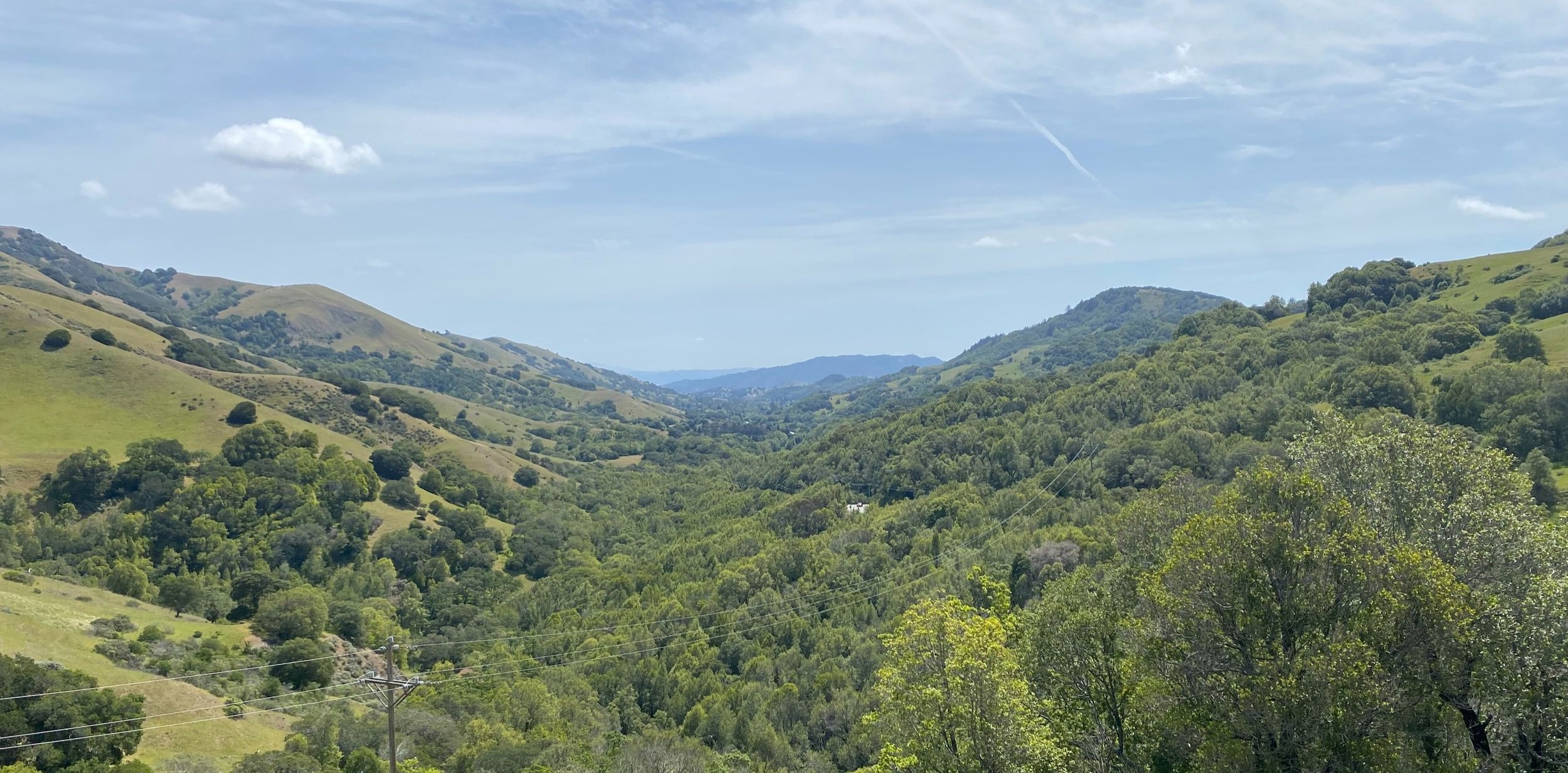In one of EAC’s earliest campaigns, we joined forces with a diverse coalition to push back against the infamous 1960s Marin Countywide Plan that would have paved and subdivided our coast. If that plan had moved forward, Marin County would be a very different place today.
Fortunately, our local communities were successful in changing political leadership in the County that resulted in the County’s adoption of a precedent-setting ecological study, Can the Last Place Last? That was the basis for the updated Countywide Plan in 1973 and subsequent regional Community Plans that would guide land-use and community planning decisions for the next 50 years.
One important milestone to slow the push of urban sprawl was the creation of ‘A-60 zoning,’ a land use regulation that limits residential development to one house per sixty acres of agricultural land. A-60 zoning saved more than 136,000 acres of agricultural land that was viewed as vacant land and ripe for development.
Now, 50 years later, under pressure by the State of California’s Regional Housing Needs Allocation (RHNA), the County is considering a precedent-setting decision to reverse A-60 zoning that would pave the way for development outside of urban growth boundaries and the City Center Corridor for potential development of hundreds of units. This year marks the most recent eight-year Countywide Plan update, and this time around, the State is requiring that the County plan for a significantly higher number of potential housing units than in previous cycles (19x more housing units since the last 8-year cycle). The current RHNA cycle proposes over three thousand new units in unincorporated Marin alone.
We continue to raise concerns about the inappropriate site selection, the disregard of Community Plans, and the lack of comprehensive community input and engagement as all public workshop meetings have taken place online, preventing full community collaboration and equitable participation.
We are concerned about potential site selection in and near creeks, wetlands, and beaches; near sensitive habitat areas; and the lack of inclusion of Community Plans to guide decision-making. The County must uphold the legacy of our environment and community planning, as well as implement complementary policies that address other causes of the housing crisis like the hollowing out of our residential communities.
Now, given the proposal to rezone A-60 parcels, it appears the County is poised to dismantle this keystone zoning, and with it, the legacy and promise of environmentally sustainable development planning in the County.
What’s Next:
The County is currently undergoing the programmatic analysis required by the California Environmental Quality Act (CEQA) for the impact of these thousands of units identified for future development. A public workshop is tentatively scheduled for June 14th to update the public on the status, discuss related proposed plans and policies, and also potentially provide a confirmation on the release date of the Draft Environmental Impact Report (Draft Programmatic EIR). The Draft Programmatic EIR should result in the exclusion of inappropriate sites (e.g., locations that were sited adjacent to Tomales Bay, in wetlands, floodplains, etc.). It is important to note the Draft Programmatic EIR will identify potential negative environmental impacts, but it will also propose mitigations that seek to offset those impacts.
We look forward to the upcoming public meetings and the scheduled August 2022 release of the Draft Programmatic EIR as the next opportunities for substantive comments on the process.
In the coming weeks, EAC and a diverse set of partners will be raising concerns regarding proposed A-60 rollbacks. A-60 zoning is a link in the chain of community and environmental planning that has saved Marin from urban sprawl and permanent destruction of the lands, waters, and biodiversity of West Marin. The preservation of these A-60 lands has resulted in wildlife corridors, unique viewsheds, and helped to increase adjacent public access. All of which must be protected from over-development if we are to have any hope of protecting the remaining endangered complex biodiversity upon which we all depend.
Support Our Work:
This program is being funded by the unrestricted donations made to EAC, and we anticipate the total cost of this work this year to be $15,000. If this program work is important to you, please consider a 100% tax-deductible donation today.



